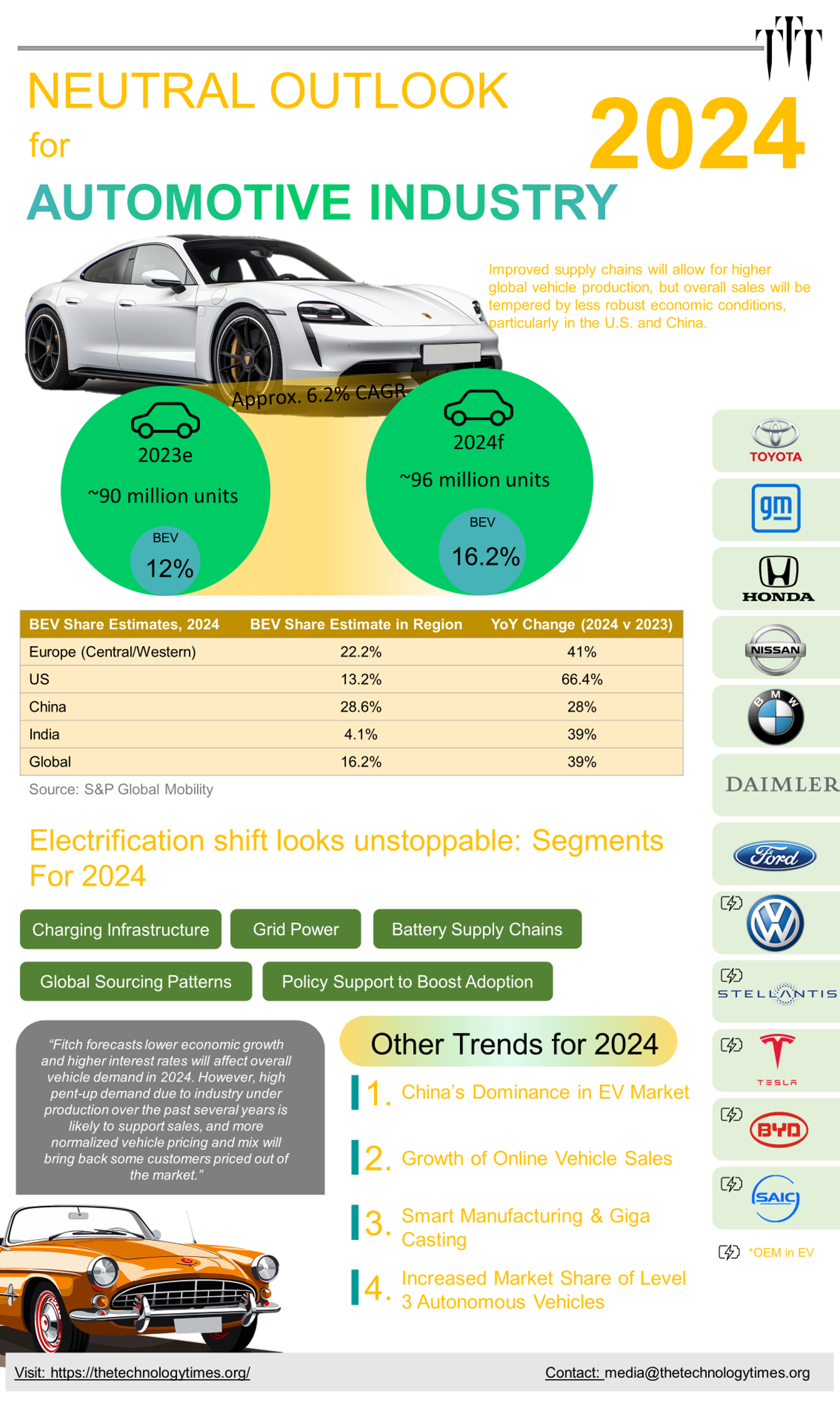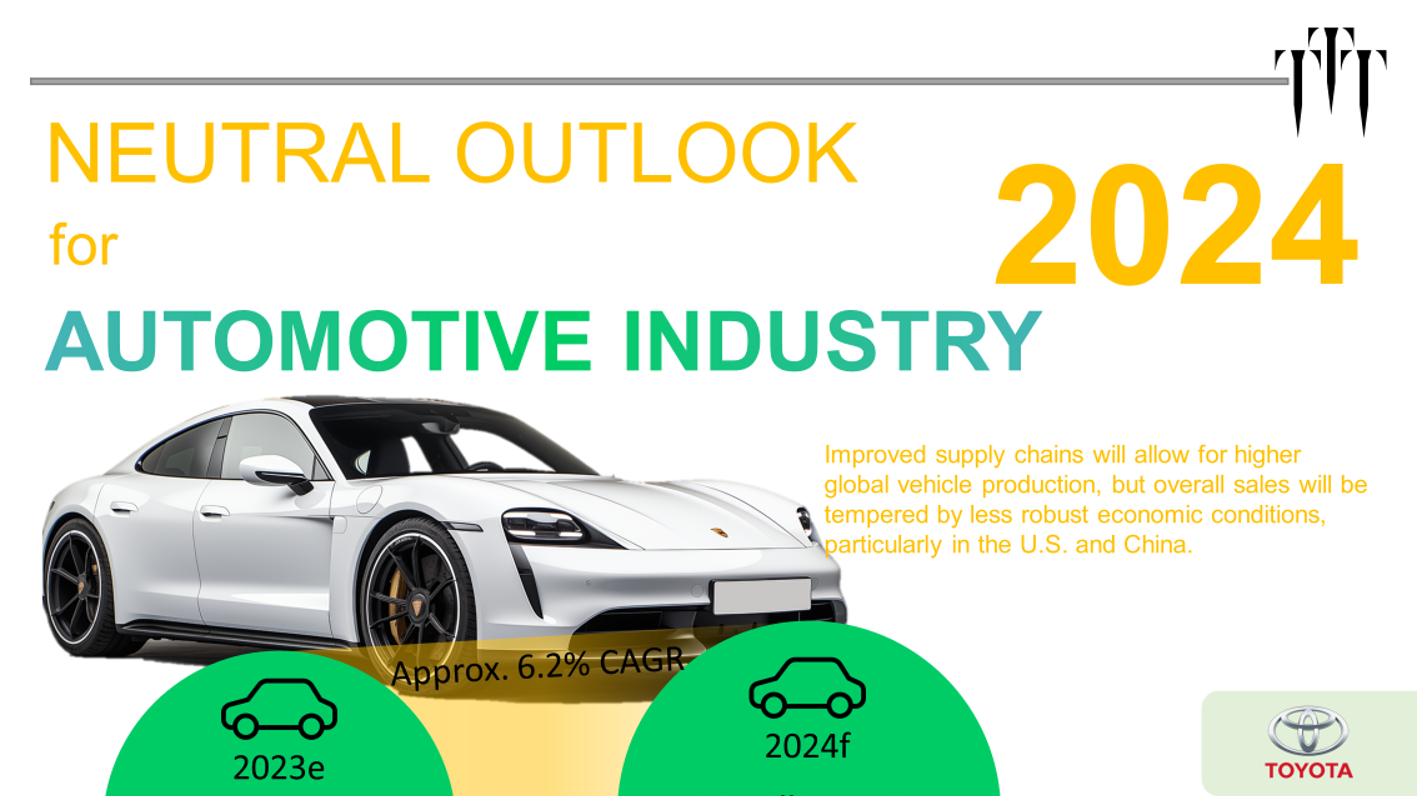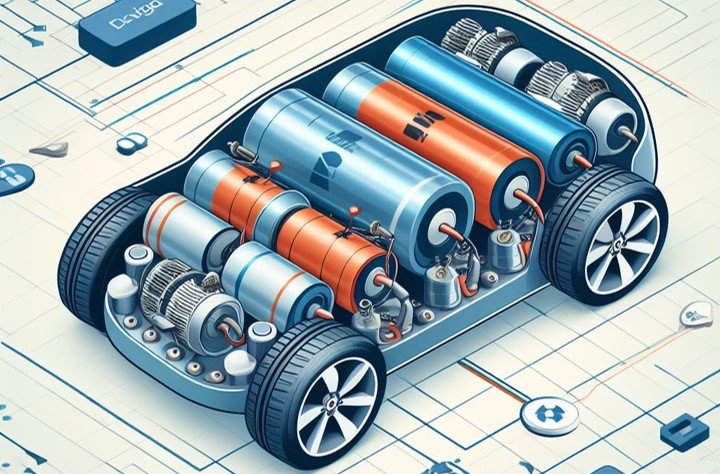In recent years, the automotive industry has undergone tremendous changes and developments. As we look towards 2024, it is clear that the industry will continue to grow, with a greater emphasis on the provision of electrification and the key elements that are shaping the landscape. In this blog post, we’ll delve deeper into the prospects for the automotive industry in 2024, highlighting key factors such as increasing electrification, a focus on charging infrastructure and grid power, and China’s dominance in the electric vehicle (EV) market, online vehicle sales growth.
The Rise of Electrification
A major trend in the automotive industry is the rapid growth of electrification. As climate change and emissions concerns intensify, governments and consumers are increasingly demanding electric vehicles over conventional combustion engine (ICE) vehicles By 2024, the global electric vehicle market is expected to grow significantly.
Automakers are investing heavily in the development of electric vehicles, with major players such as Tesla, Volkswagen and General Motors leading the charge. As technological advances improve and battery costs continue to decrease, electric vehicles become more affordable and more accessible By 2024, electric vehicles are expected to become the mainstay of many car buyers.

Focus on Charging Infrastructure and Grid Power
As the adoption of electric vehicles accelerates, the need for robust charging infrastructure is increasingly important. Governments, utilities and car manufacturers are collaborating to create precision charging stations to support the growing number of electric vehicles on the road.
In addition to expanding charging infrastructure, there is an increased focus on efficient use of grid power. Vehicle-to-Grid (V2G) technologies are being explored for smart charging solutions to optimize the use of renewable energy and ensure the stability of the electricity grid. By 2024, we can expect significant improvements in charging infrastructure and grid power management, making electric vehicle ownership more flexible and sustainable.
China’s Dominance in the EV Market
China has emerged as a global leader in manufacturing and sales in the electric vehicle market. The Chinese government has implemented positive policies and incentives to promote the use of electric vehicles, increasing demand. By 2024, China is expected to continue to dominate the EV market, accounting for the largest share of global electric vehicle sales.
Chinese automakers, such as BYD, NIO, and Xpeng, are rapidly expanding their electric vehicle offerings and gaining traction in both domestic and international markets. With their focus on innovation, affordability, and range, Chinese electric vehicles are becoming increasingly competitive with their global counterparts. As a result, China’s influence in the electric vehicle space is set to grow even further in the coming years.
Online Sales of Vehicles
With changing consumer preferences and advances in digital technology, the automotive industry is witnessing a shift towards online sales channels. Online car sales are expected to increase by 2024, with consumers embracing the convenience and transparency offered by digital channels.
Automakers and dealers are investing in online shopping platforms, offering virtual showrooms, interactive car designers and seamless online shopping experiences This trend is especially evident in the wake of the COVID-19 pandemic, which has led to the adoption of digital retail solutions atomic speed. By embracing online shopping, automakers can reach more customers and simplify the car buying process.
Overall, the automotive industry outlook for 2024 is characterized by increased electrification, centralized charging infrastructure and grid power, Chinese dominance of the EV market, and growth in online car sales as technology advances and consumer preferences evolve And there will be further changes in the automotive industry, which will shape the way we travel and interact with cars in the coming years.
















+ There are no comments
Add yours